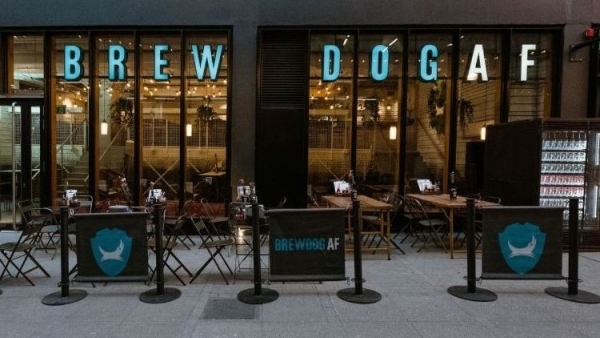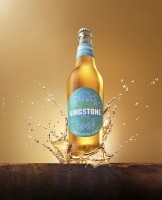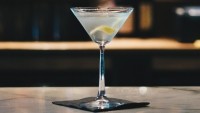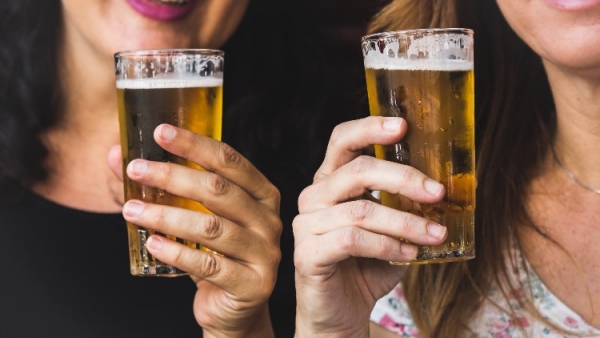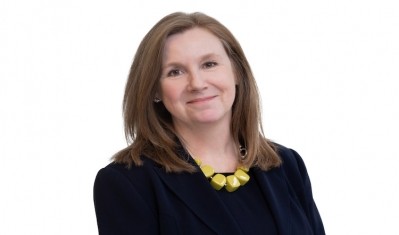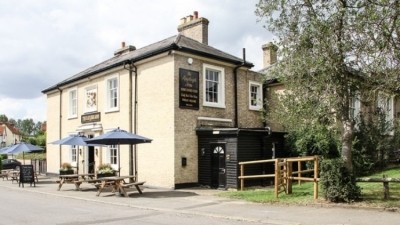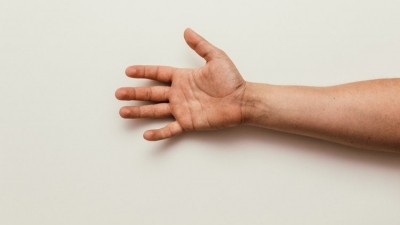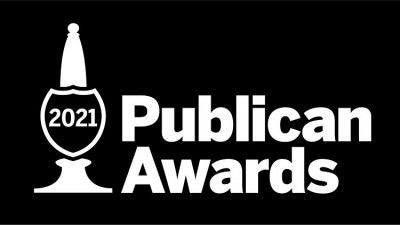Has Covid-19 shaken up low and no alcohol pub drinks?
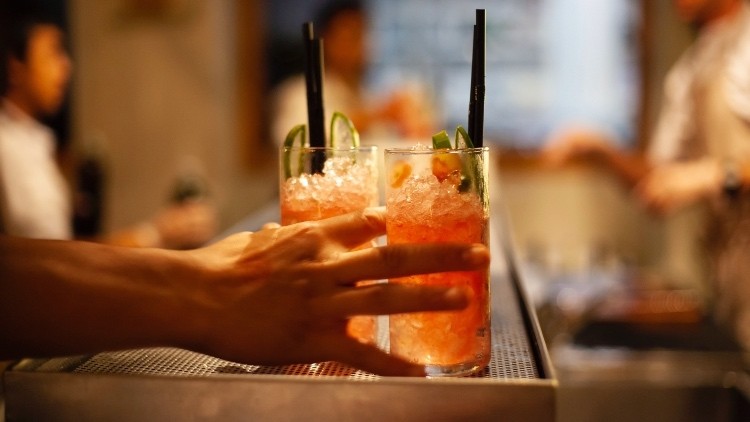
According to the co-founder of mindful drinking movement Club Soda, Laura Willoughby, Covid-19 has “supercharged” health and wellness trends, which she believes are spilling over into enthusiasm for low and no alcohol drinks.
“We expect the Dry January campaign to be bigger this year as people seek to improve their mental health and fitness,” she explains.
“We need to continue to persuade them that the pub is the best place to hang out to make that happen – it has the social element that is key to happiness.”
Yet a standout year for the low and no category kicked off pre-pandemic when independent Scottish craft brewer and bar operator BrewDog claimed that it had launched the ‘world’s first alcohol-free beer bar’ – featuring 15 taps of draft alcohol-free craft beer – in January.
“Drinkers opting for low or no-alcohol are in danger of compromising on quality, taste and experience and that’s just the beer, forget about places in which to enjoy it,” BrewDog co-founder James Watt said of the east London site’s launch. “We are going to change that.
“We exist to be a point of difference and our first BrewDog AF Bar is just that. It is a beacon for anyone in London after an alcohol-free alternative.
“Alcohol-free does not need to be synonymous with taste-free. ‘Drink All You Can Jan’ is our anti Dry January. Whether you have cut alcohol out or are cutting back we want to show alcohol-free doesn’t mean compromising on quality or taste.”
Early thirst
ADVERTISEMENT
Crafted with care the modern way: Kingstone Press launches low alcohol cider
Growth of the no and low alcoholic beverage category is 45%; the fastest growing category*. Responding to the growth in popularity of low alcohol options among tee partial and younger consumers, Kingstone Press has launched a new low alcohol (0.5% ABV) variant of its original apple cider.
Crafted with care, the modern way, Kingstone Press Low Alcohol Cider uses the same blend of delicious apples harvested from orchards across Worcestershire & Herefordshire as used in the 4.7% ABV apple cider.
Available in 500ml glass bottles, Kingstone Press Low Alcohol Cider is created from a delicious variety of apples including Michelin bittersweet, Angela and Dabinett. The craftmanship of its cider makers finds the perfect blend of apples and juices to give the cider a fresh, crisp apple aroma and bright golden colour. On the palate, this medium dry low alcohol cider has a clean, refreshing taste that leaves a subtle tannic finish – perfect for every occasion.
The low alcohol version features Kingstone Press’ refreshing new modern look and design, bringing to life story of the brand and its crafted with care from orchard to table mantra, and sustainable production.
Katie Walker, brand manager for Kingstone Press, comments: “There’s growing popularity among customers for low alcohol options of favourite drinks, so we’ve spent time developing the low alcohol version of Kingstone Press to ensure the taste matches perfectly to the alcoholic cider.
“Whether a customer is looking to upgrade from a soft drink or simply reducing their alcohol intake, they can now do so while still enjoying the great, refreshing taste and drink experience of Kingstone Press.”
To find out more about Kingstone Press Low Alcohol Cider, visit www.kingstonepress.co.uk/low-alcohol/
*Source: CGA OPMS, NABLAB Vol sales to 25.01.2020
BrewDog aside, however, 2020 had already been teed up as a big year for the low and no category before Covid-19 hit.
“Prior to the arrival of coronavirus, we had seen an increase in people drinking low and no-alcoholic drinks as part of the move towards healthier lifestyles,” Jane Jones, marketing director at Fuller’s, said. “Improvements to the range available have also clearly had an impact too.”
However, while the number of people trying low-alcohol drinks was growing at the turn of the year according to YouGov data, customers stated that they still struggled finding teetotal options when drinking and dining out of home.
Some 57% of adults said they would consider drinking a low-alcohol beverage at a pub but only 43% of people surveyed said they had seen any for sale in a pub. Some 13% of all adults did not recall seeing a low-alcohol option available for sale anywhere.
However, the survey also showed there was momentum in the low-and-no category, with more than half of alcohol drinkers (59%) having at least tried one low-alcohol product.
What’s more, a poll by premium soft drink, tonic and mixer brand Franklin & Sons in tandem with Launchpad Research claimed that from the outset of 2020 consumers were being more mindful about their alcohol consumption with the key reasons including going out less often (43%), trying to get fit (30%) and saving money (27%) – trends which very publicly stayed the course during lockdown.
“We are definitely seeing a trend towards quality over quantity when it comes to the way people drink,” Franklin & Sons brand manager Rosie Crossman said in January.
“Socialising means more to our consumers than a couple of pints down the pub, they demand Instagram-worthy serves, which aren’t packed full of artificial colours, flavours or sugar or high in calories.”
Low and no lockdown boost
However, with some 72% of those who consumed less alcohol or stopped drinking in January planning to do so in the long term, according to research from Drinkaware, the early thirst for low and no options subsequently spilled over into the rest of 2020.
The same research also found that more than half (59%) said they plan to continue to reduce their drinking and 12% said they plan to stop drinking altogether.
The poll of 2,219 adults also found that taking alcohol-free days was the most popular technique to cut down on drinking with more than a third (38%) of respondents planning to cut down saying they would have drink-free days during the week.
On top of this, a third (33%) intend to avoid booze on a weeknight, 26% intend to set themselves a drinking limit and a fifth intend to avoid always having alcohol in the house.
What’s more, as Brits acclimatised to life in lockdown In May, Nielsen data also found that the public had stocked up on low and no-alcohol drinks from the off-trade prior to lockdown restrictions being announced.
Beer saw the biggest increase with sales up by 31% year on year, followed by low and no- alcohol spirits up 16%, cider up 15%, ready-to-drinks rose by 11% and wines 1%.
The British Beer & Pub Association (BBPA) also reported that sales of low and no-alcohol beer appeared to be rising, following research revealed by YouGov that 16% of Brits are drinking less or not at all during the coronavirus lockdown.
Growing cocktail market
According to Lumina Intelligence’s UK Pub Market Report 2020, the low and no category now represents a key growth opportunity going into 2021.
Looking back on the past 12 months, Lumina research found that only one-in-ten pub goers ‘never’ drinks low and no alcohol serves with more than a third (35%) doing so on a regular basis.
The same dataset also revealed that low ABV pours were most popular among younger consumers – with almost half (46%) of 25-35-year olds, and 42% of 18-24-year-olds reducing their alcohol consumption during lockdown.
What’s more, 25-35-year-olds were found to be the most receptive of low and no alcohol alternatives, with 31% saying they’d be either somewhat or very interested in more low ABV serves.
Consumers were also found to be most interested in buying mocktails in Lumina’s UK Pub Market Report 2020 report.
When asked ‘which of the following would you buy in a pub?’ almost one-in-five (18%) drinkers said they order a mocktail, compared to 15% who’d plump for a low alcohol beer, lager or cider, one-in-ten (9%) who’d opt for a low alcohol wine, and 8% who’d order a low alcohol spirit.
Low and no alcohol beer sales in 2020
This year volume sales for the whole category stood at 33,882 HL with a combined value of £29m compared to 46,311 HL and £40.8m for the previous year.
The latest edition of The Morning Advertiser’s Drinks List saw Becks Blue knocked off top spot in the low and no alcohol beer category for the first time since the rankings’ inception.
Since its launch some years ago it has been a tough tipple to dislodge atop the list, but Heineken's relatively new Heineken 0.0 has bumped Blue into second place.
According to CGA data, 0.0's volume sales are only slightly lower than last year's, coming it at 17,244 HL this year compared to 18,190 HL during 2019. This suggests the brand was on course to set a category record and break Blue's 20,301HL performance last year
This year, Blue saw its volume slump dramatically from 20,301 HL last year to 9,757.
Peroni Libera, a new entry, was the only brand in this segment to show growth - however, the new brew only launched in summer 2019 meaning that it may still be premature to honour it as the category’s standout performer despite growing from 2,004 HL last year to 3,483 HL, which equates to nearly 74%.
2020 rank | Brand | Volume (HL) | Value (£m) | 2019 rank | Up or Down |
1. | Heineken 0.0 | 17,244 | 13.7 | 2 | +1 |
2. | Becks Blue | 9,757 | 9.7 | 1 | -1 |
3. | Peroni Libera | 3,483 | 3.4 | New Entry | New Entry |
4. | San Miguel 0% | 1,832 | 1.6 | 3 | -1 |
5. | Erdinger Alcoholfrei | 1,565 | 1.1 | 4 | -1 |
Sam Cornwall-Jones of the Drawing Board in Leamington Spa, Warwickshire – winner of the best for beer category at the 2019 Great British Pub Awards – adds that as low and no-alcohol options become of higher quality and taste, the opportunity for designated drivers to enjoy something more than soft drinks becomes larger and more lucrative.
“This is a trend that has increased year on year, but we will dedicate a line to draught low alcohol craft beer from the likes of Big Drop, Lucky Saint etc.,” he explains.
“We have always had exceptional success with Rothaus Pils Alcohol Free from Black Forest Beer – this tastes almost as good as the real thing.”
